Create a Biodiverse Garden and Let a Little Wild In
No garden is too big or too small to contribute to biodiversity
The natural world is becoming more fractured and fragmented by human activity than at any point in history, and every evidence suggests this will continue to get worse. That means all gardens, big or small, can become an oasis for insects, amphibians, reptiles, birds and other wildlife - IF we plan on letting a little wild in.
It actually takes very little effort (much less than think) to create a biodiverse garden and the rewards are often exciting and immediate for you and for the creatures living near you.
I’ve put together as many ideas as I could think of to increase the biodiversity of your garden, backyard, patio or other greenspace. By creating safe havens, and inviting mother nature into your garden, you boost it’s productivity by restoring natural ecological cycles, nutrient pathways, and predator-prey relationships. These havens - also known as refugia - can even help to sustain species that are at risk of going extinct when you take the time to include elements of habitat needed for the at-risk species in your area.
Let’s dive in.
What is a biodiverse garden?
A biodiverse garden contains many different species of plants, with a wide variety of flower types and all-season habitats, which in turn support many different types of micro-organisms, insects, birds and animals. These gardens have varied structures, groundcovers, plant families, and features to purposefully attract and enhance local populations of creatures big and small.
All gardens do not need to apply every idea in order to make the ‘biodiverse’. You can focus on one strategy, or choose multiple ideas to create your own safe haven/refugia. The bottom line is that every step you take to create biodiversity can lead to new opportunities to experience nature first hand in your own space.
You might be surprised who starts showing up!
As I explain the actions, I am going to use the term “wild life” as a catch-all for all the diversity I am referring to from micro-organisms, insects, birds and animals. I am using this here to distinguish what I am saying from “wildlife” which is commonly thought of as mammals, and sometimes includes birds. Here we are talking about havens for all kinds of creatures. And it’s your garden, so you get to choose who you invite in.
Start with a little chaos
I know we’ve all been brain-washed by stunning magazine covers and flooded with internet images of (literally) picture-perfect gardens, but let’s hit pause. Do you see those things in nature?
For sure fields of wildflowers come close to the magnificent scene. But what makes nature so incredibly beautiful is its flow and patterns, not rigid lines of flowers spaced out with bark mulch or rocks between.
Don’t get me wrong. I LOVE a dazzling display of horticulture with the best of them and I have several spirea bushes trimmed to box square displays. But what I love more is a little chaos in the scene. Because that is where nature gains a foothold.
So take a deep breath, let go of what has become the social norm for gardens, and let some magic take hold:
Don’t deadhead and remove all the spent flowers or leaves.
Leave some areas that are not mowed, raked and trimmed to perfection.
Create some permanent/perennial sections in your annual gardens. For example, plant some perennial herbs in your annual vegetable garden to hold some permanent space. And yes, this means working around them!
Let the grass grow (too) long in the spring. Like really long. So that the insects overwintering there have a chance to emerge on a natural cycle instead of the over-exposure to sun and rain caused by early mowing.
This is going to leave your garden looking pretty rough around the edges at time, but it will change the wild life living there. Remember what looks like picture-perfect garden to us is actually a pretty hostile environment for wild life!
You can change that by simply letting some area “go” a bit wild and naturalize.
What looks like a perfect garden to us is often a place hostile to nature because of the constant tilling, weeding, chemicals, and lack of all-season habitats. In some cases it may even be considered a “sink” = a place that draws in wild life, but then kills it.
Add native plants
Native plants are the ones that normally grow in your area, and that are not introduced or invasive species. In other words, before people changed everything, what would be growing where you live?
It is very simple math: More Native Plants = More Native Wildlife
You can create a section of your garden devoted to native plants, or simply intersperse them into what you are already growing. Just adding some native plants increases the odds of you seeing (and supporting) native wild life.
You can learn about native plant species as easily as googling ‘native plants in my area’, by spending some time in natural areas around you and seeing what grows there, and by talking with local naturalists or gardeners.
Work in 3D not 2D
Strange as this may sound, we tend to create gardens in 2-dimensions, and all too often forget to tap into the airspace above them!
Add tall shrubs, trees or vertical structures vastly increases your gardening space and the biodiversity values of your garden. If the shrubs, trees, or vines you add flower, then the value impact is even greater.
And really there is a 4th dimension to consider as well - depth below ground!
Think about that for a moment. Different plants have different root structures and depths. The deeper the roots, the more living soil area is being created below the ground compared to only planting shallow rooted annuals.
Some great deep rooted perennials in lavender, columbine, and cone flowers, and deep rooted vegetables include tomatoes, squash, and some types of carrots.
So multiply your space by looking beyond covering the ground, and you can realize a greater biodiversity return for your efforts.
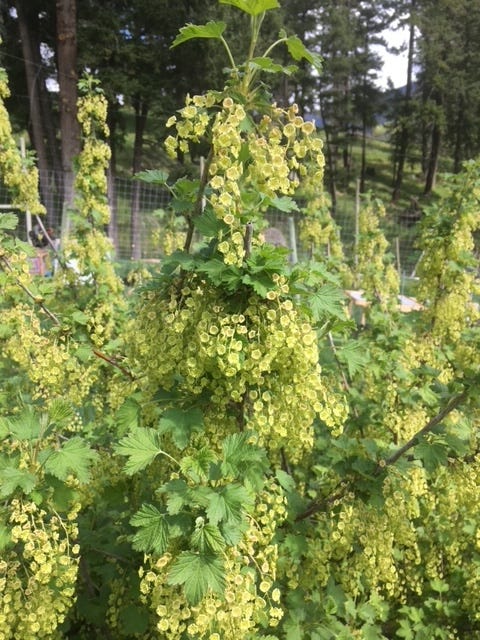
Pile up the opportunities
Creating new biodiversity opportunities can be as easy as creating a pile of sticks, leaves or rocks in your garden. You will be amazed at what takes refuge in a pile.
A pile of sticks becomes a playground for Spotted Towee in my yard. They are one of the most industrious garden helpers you can harness in the Pacific Northwest. They stir up ground covers and eat up all the bugs, and they love to have a stick pile to shelter in.
I also have 4 species of snakes that live here. Rock piles give them cool places to hang out when the sun is baking in the summer. Why encourage snakes? Because they eat small rodents and root out their nests in places I would never find them.
And many of the predator insects, especially the ground beetles, thrive best when they have these kinds of shelters (sticks, leaves, rocks). Ground beetles are garden avengers, seeking out pests both above and below the ground.
Nature is a little bit messy (sometimes a whole lot messy) and that spatial diversity leads to some amazing garden campions you would otherwise be missing.
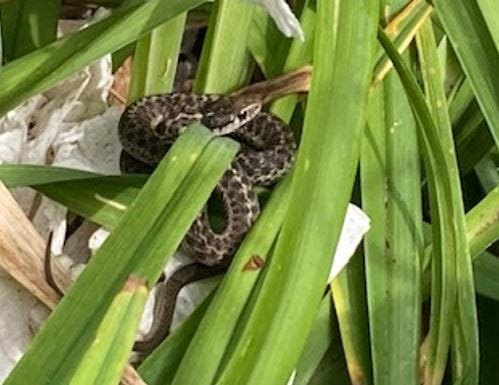
Decay creates new life
We’ve become a society that shuns decay as “bad”, but in nature, decay is a critical part of the natural energy and nutrient cycle. A little decay goes a long way for creating biodiversity in your garden.
A chunk of rotting log (not bark mulch), can add a visual point of interest as well as provide habitat for some amazing wild life. Even making sure your compost has woody materials in it can go a long way to supplying the diversity and rich habitats needed for part of the natural cycle.
Composting right in your garden (instead of a separate pile) can make rotting materials more easily available. You can try a small wired compost loop or trench just below ground in part of your garden to encourage diversity without attracting problems like rodents or bad smells.
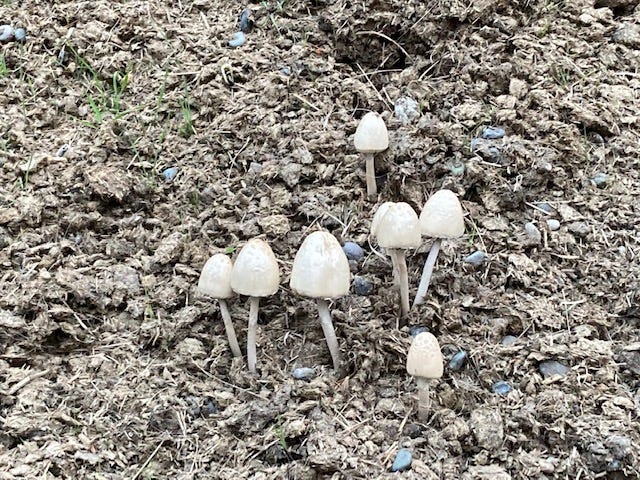
All sizes, shapes, and colors please . . . and all seasons!
The cornerstone of a biodiverse garden has to be the plants. The more sizes, shapes and colors of plants and flowers you include in your garden, the better. So while I love the ascetics of well done all white flower garden display as a beautiful home front image in a real estate photo shoot, the reality is that diversity begets diversity when it comes to nature.
The ultimate goal in a biodiverse garden is to create pollination opportunities from spring until fall. Pollinators drive life and renewal on our planet. So while you don’t have to plant a kaleidoscope, thinking about which plants provide resources across the whole gardening calendar really changes how your garden functions in relation to your surrounding area.
No Till systems work best
No till and minimum till systems preserve biodiversity in the garden best because constantly chewing up the soil is really bad for life on earth. (See: Why bare soil (and topsoil erosion) is a problem for us all)
Disturbed soil loses nutrients, invites weeds, and leads to erosion.
The less you dig and turn, the more life stays in your garden year round. So dig you must, but leave the rest of the ground to naturalize and support wild life.
When you do disturb the soil, use mulches to protect the soil from further harms. Materials like grass clippings, leaves, straw, shredded paper or cardboard can be laid over bare soil and reduce the negative impacts of digging or tilling.
Lawn Less
The classic look of a manicured law and bark mulched flower beds are the polar opposite of creating a biodiverse garden.
According to The National Wildlife Federation (April 2024), US lawns occupy over 40 million acres. Think about that for a moment. Think about the time, chemicals, water, and energy that go into maintaining a status symbol image of suburbia - a.k.a. the perfect lawn.
Most lawns are ecological disasters.
Do this instead:
Reduce your lawn size to minimum by converting more of your yard to perennial flowers, shrubs and trees (think of the time savings there!).
Plant part of that space with natives for an even bigger biodiversity boost
Plant part of that space in a food garden and see money stay in your wallet at the grocery store!
Convert your lawn from grass, to a mowable mixture of plants and ground covers (or even drop the grass part altogether). Yarrow and clover and mowable and soft on the feet. Creeping thyme, oregano, creeping phlox, chamomile, and other low growing plants can easily replace a lawn and require a fraction of the maintenance.
Don’t kill the new neighbors!
After all this effort to attract more wild life into your greenspace, don’t kill them chemicals. Pesticides, herbicides, and even many chemical-based fertilizers do damage to wild life and can poison water sources.
Going chemical free and biodiverse can actually result in fewer pest problems and costs you no money in the process.
It’s so much cooler to be square
Plant in squares and blocks, not rows.
Whether you are designing your landscape, or planting a food garden, you greatly enhance your biodiversity options and minimize weeds by grouping plants in patches than by row planting.
It is believed that row gardening was first developed by the Chinese as a way to increase efficient growth and harvests. Modern row gardening is often built around the idea of using mechanized tools like tillers and tractors.
But from a space utilization perspective, and certainty from a biodiversity point of view, having plants NOT in monoculture and NOT in long rows (but rather wide rows) gives you the greatest returns.
The picture below shows a checkerboard planting of lettuce-arugula-mustard in the foreground, followed by celery, then broccoli and then kale in a 3-ft wide row.
To learn more about this approach in a simple 30-day challenge, dive into the Get Started Garden mini-course.
Add a splash of water
Exhausted just thinking about the work involved in adding biodiversity?
Well, I saved the simplest and easiest step for last. Just add a water feature!
Any water feature creates instant biodiversity rewards. It can be as small as a shallow pan with pebbles and water, a bird bath, patio fountain, a half barrel and so on to as big as you care to create.
There is no life without water.
Simply making a water source available to wild life changes everything.
Just add water and let the magic begin.
Let a Little Wild In
It’s never too early or too late to start designing your greenspace with biodiversity in mind.
In a world where just staying alive is a considerable challenge, providing an oasis, a refuge for wild life, can bring so much joy into your world.
And as an added wellness bonus, the more time you spend outside noticing and appreciating the wild life that come to appreciate your biodiverse garden, the healthier you will be too. More time in nature is known to boost your mental wellness as good as many drug prescriptions.
The size of your garden doesn’t matter. What matters is that you have created opportunities for more wild life to coexist with you.
You are letting a little wild into your life.
Few things feel this good.
Check this out!
The Naturalized Human was featured in a Redfin article! Check it out here: Increasing Biodiversity by Creating an Eco-Friendly Yard
Do you have another tip for creating biodiversity where you live? Or a success story to share? Tell us in the comments.


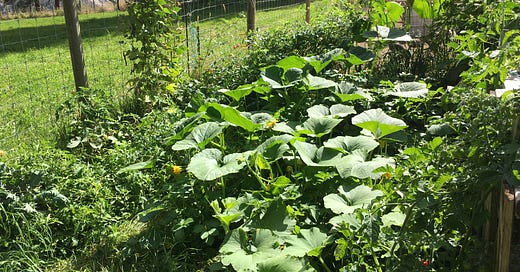




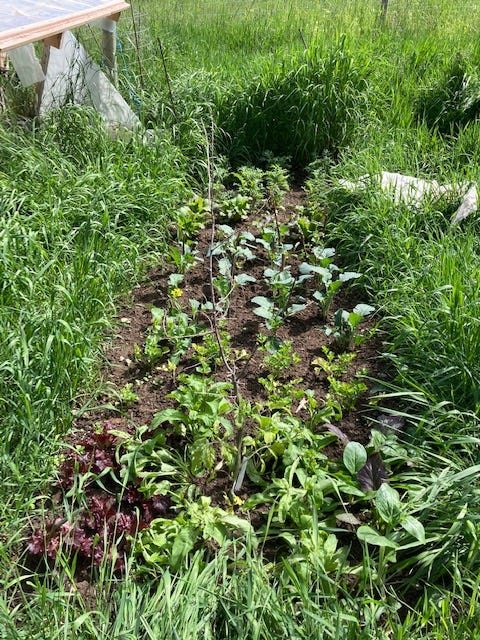
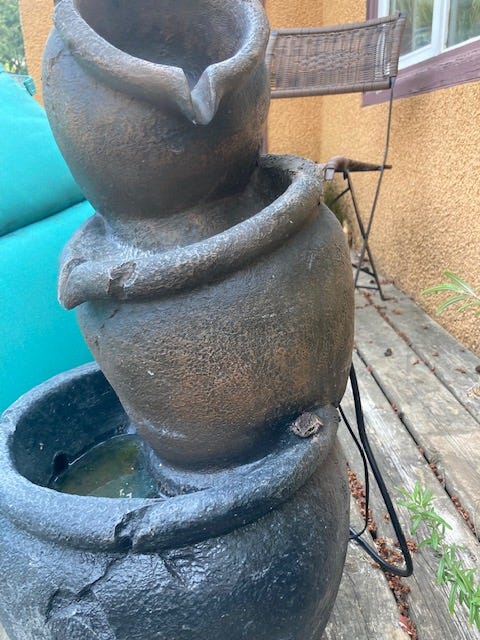

This is amazing!! So many great tips in one post. I started making notes by hand but had to stop because my hand hurt. I'm bookmarking this post instead and looking forward to revisting it often as our family plans for our gardening projects next spring.
Thanks for taking the time to share all of this!
I recently read a book called Bee Quest by Dave Goulson. It was incredibly insightful. One thing it introduced to me was the "rewilding" projects taking place in parts of the world, including here in Canada. Are you familiar with these projects? If so, I'd love to hear your thoughts on them?
I'm in the process of wilding up my new allotment space. Very excited for spring. Thanks for all the great tips! 🌺